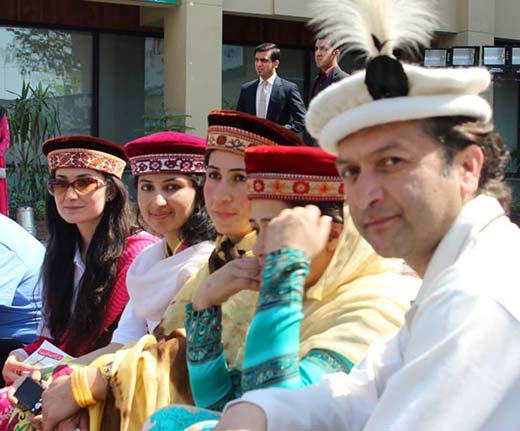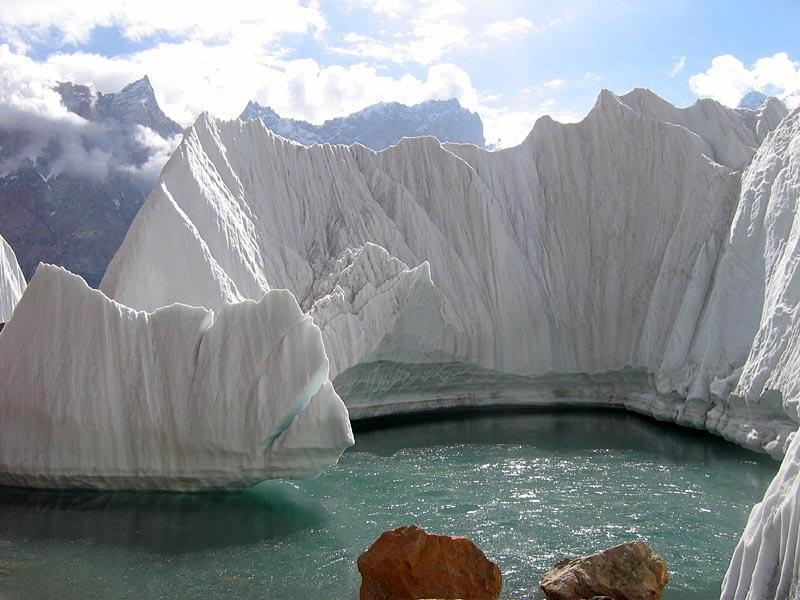Its proximity to China, Russia and India, is both boon and bane for Gilgit Baltistan. Empowered by the 2009 LFO, it wants all its erstwhile routes to the world opened. Kashmir Life special correspondent reports.

His statement inviting Indian tennis star Sania Mirza and Pakistani cricketer Shoaib Malik for a honeymoon in Gilgit-Baltistan (GB) got him enough of publicity on this side of the Radcliffe divide. But the sentence that created ripples on either side was a bit earlier when GB Chief Minister Syed Mehdi Shah repeatedly said GB was never part of the erstwhile state of J&K.
“He (Shah) might be politically correct but historically and legally he seems to be off the reality,” a banker from GB told Kashmir Life. “There are over 600 families in GB which are literally divided and most of our land revenue records are in Kargil.”
He wants some kind of mechanism to emerge out of the slow-paced peace process that will help people get access to records so that disputes arising out of its absence are taken care of.
A large number of people do want some kind of relationship to get restored. “For a discussion in 2003, I had to travel 1700 km from GB to reach Kargil which is barely three kilometres from the town I live in,” said M Ismail Khan, a former journalist and an expert on GB in Islamabad. “Most of the people in GB cannot afford so long a journey to reach Kargil.”
New Delhi and Islamabad did talk about the reopening of the Kargil – Skardu road many times after the two sides threw open the Jhelum Valley Road (JVR).
“There is just a bridge that needs to be laid on roaring Shingo River and the 135 km road from Kargil to Skardu will be ready,” said Khan. “Unlike the one connecting to Srinagar, it will neither be fair-weather nor passing through dangerous passes.”
Only six kilometers of this road that takes off from Harka Bahadur Bridge on the Srinagar-Kargil highway, are on this side of the LoC. It ends at a place that army calls Point 43, one of India’s most forward peak in Hunderman. It is the spot where the two sides exchange body-bags during turbulent times; it is a picnic spot now. Apart from Hunderman, the LoC has depopulated three villages – Frol, Shondi and Brolmo (on the other side).
But vast sections in India and Pakistan believe Islamabad will never open the road given the 72,496 sq km GBs geo-strategic significance. Termed as ‘axis of Asia’ and a pivot where ‘three empires meet’ GB links south, central and West Asia. “We seem to be living dangerously. We have armies of Russia, China, India, Pakistan, Taliban and NATO surrounding us but that is where our strategic worth lies.”
Off late, GB has changed. Islamabad’s 2009 Legal Framework Order empowered GB to a level- somewhere between a cocktail of a province and a semi-autonomous region. It has boosted the morale and the trade in the region. Karokaram Highway that connects Islamabad with China passes through this mountainous belt and has a huge impact on the local economy. Currently there is a debate in GB that since it is neither a part of Pakistan not included in Azad J&K, why this advantage does not fetch it a tax free zone status.
“The trade with China is actually 20 billion rupees but officially it is only six billion rupees because a lot of it is not listed,” Shahbaz Khan, the president of GB Chamber of Commerce said. “We have 3000 registered traders who are importing and exporting with China.” Recently, the export of lead, copper, and chromate to Beijing has started and it will be a great business within a few years, he added. He says the highway is under-utilized and will trigger a boom in the entire region if and when the traffic increases.
Ismail says that GB witnessed massive penetration of the IT in last few years. “Right now, there might be over 250 millionaires in GB and most of them have made fortunes by trading with Middle East, Europe and China using internet,” he added. Despite all these strong indicators of growth, the belt has barely half the per capita income of the plains in Pakistan and over one-third population live below poverty line. Around 43 percent males and 27 percent of females are educated. Its major strength is that 60 percent of the belt’s population is below 20.
As the policies in Islamabad are getting liberal, tourism is gradually emerging as a new economy in GB. Currently it has 2500 rooms with fifty percent occupancy round the year. It is a place where four great mountain ranges Himalayas, Hindu Kush, Pamirs, and Karakoram converge offering GB a treasure of peaks. It is home to 18 of the world’s highest 50 peaks including K2, the second highest peak in the world that is the main source of attraction for the high-spending western mountaineers. Three of the world’s seven longest glaciers outside the polar region are also in GB – the Biafo Glacier, the Baltoro Glacier, and the Batura Glacier, offering it an ice corridor of 116.87 kms.
The quality of life, residents say has improved a lot. “We have enough of institutions and now our priority is to have quality education,” says Ismail. Public spending, income from trade and massive investment by the NGOs has helped the region to change at grassroots. “Our social indicators are ahead of many other areas in Pakistan,” he added.

Presently it is the abundant water of GB that is making it a focus of Islamabad’s attention. “For ecological reasons we did force Islamabad to abandon the idea of constructing a dam in Skardu having 38 billion acre feet capacity,” said Ismail. “But many power projects are being implemented including some having their main input from dams.”
Right now GB has power units with cumulative capacity of 116 MW in operation. “We are having potential of over 40,000 MWs of which right now 12493 MWs are under various stages of implementation and another 9074 MW is either under PFR or DPR preparation,” added Ismail.
But the fragility of its ecology is increasing its dependence. Currently the GB is battling to drain a lake that was formed by a landslide on Hunza River at Attaabad. The landslide came on January 4 last killing 19 people and blocked Hunza river. Gradually it created a lake that is now seven miles long and the level is rising by 30 centimetres a day. Its burst can endanger the lives of 45000 people downstream. Already 1600 people have been displaced. GB government has engaged Frontier Works Organisation (FWO) and National Highway Authority (NHA) to drain the lake. Currently the people of this belt is being fed by China that has opened its border on humanitarian grounds.
It is this inter-dependence that makes many in the region think that all the erstwhile routes need to be reopened. A western think tank has already commissioned a study suggesting the potential of tourism in case Kargil-Skardu road opens. Given the feasibility study going on for reopening a route between Pakistan and Tajikistan, many in GB believe that it will trigger massive pilgrim tourism from Kashmir towards Khatlan, where Mir Syed Ali Hamadani is laid to rest. The shrine will be accessible for the budget pilgrim if the twin routes open.
There are many other roads that existed before the partition enforced new boundaries on Kashmir. Ismail says Astore will not be far away from Gurez which is 123 km from Srinagar. Its six-month blockade by nature will end as it will have round the year connectivity with Astore. Another road existed between Leh and Skardu via Turtuk and Khaplu which would be around 400 Kms. But many experts on either side of the divide say it may not be opened till the Siachin glacier issue is resolved. The road passes close to the glacier.















